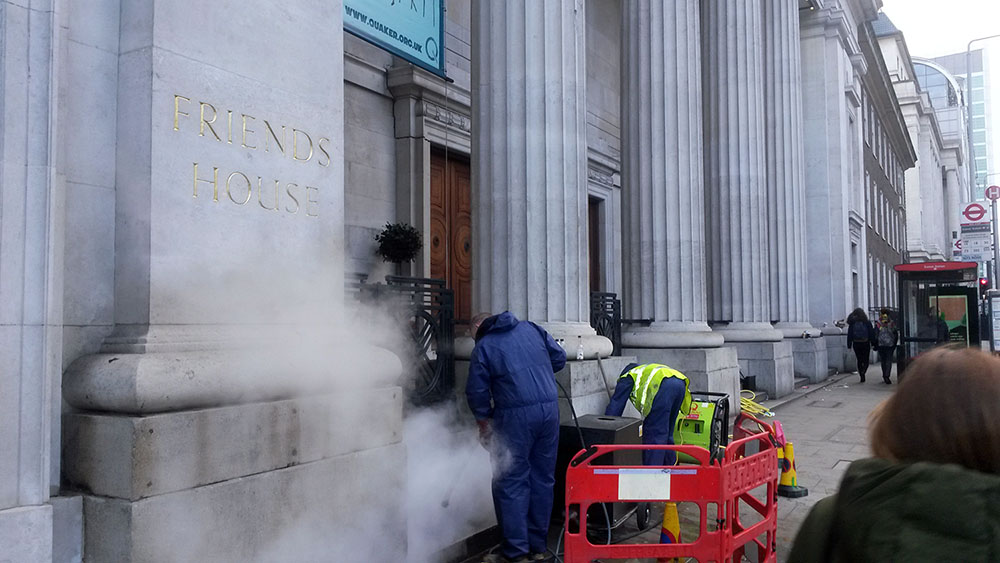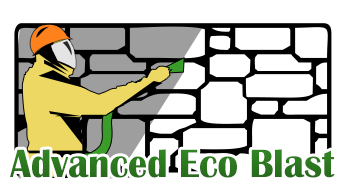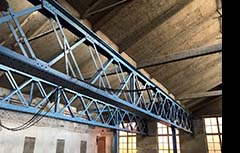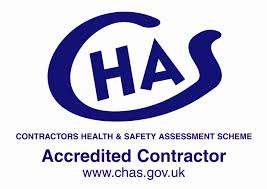Steam Cleaning
Water is capable of dissolving almost any kind of substances, in fact, more than any other liquid known to man. It is a simple yet highly effective solvent and can be used cold or hot and as a liquid or steam for cleaning. Indeed, water is ideal for most of the substrates in addition to being handy and effective when it comes to eradicating sulphate crusts from limestone, for superficial deposits, for biological growths (algae, moss and fungi) and certain coatings from surfaces such as brick, stone, concrete, limestone and paving and various others
 Steam cleaning process has come a long way since it was first used more than a hundred years ago. With the advancements in the field of technology, steam cleaning has evolved significantly and has turned out to be a phenomenal technique for cleaning on commercial scale such as stone, brick and concrete cleaning, street paving cleaning, architectural restoration, fire and flood restoration, graffiti removal, among others. Not only it is more efficient and budget-friendly, but it also causes less damage to the historical buildings that other method like washing with water or scrubbing with harsh brushes or something like that. Hot water washing system is more popular and widely used by people for cleaning these days, given the fact that hot water has a very low surface tension and hence, it can clean more deeply and efficiently.
Steam cleaning process has come a long way since it was first used more than a hundred years ago. With the advancements in the field of technology, steam cleaning has evolved significantly and has turned out to be a phenomenal technique for cleaning on commercial scale such as stone, brick and concrete cleaning, street paving cleaning, architectural restoration, fire and flood restoration, graffiti removal, among others. Not only it is more efficient and budget-friendly, but it also causes less damage to the historical buildings that other method like washing with water or scrubbing with harsh brushes or something like that. Hot water washing system is more popular and widely used by people for cleaning these days, given the fact that hot water has a very low surface tension and hence, it can clean more deeply and efficiently.
Following the principle of high-temperature low-pressure cleaning, modern steam based cleaning systems are equipped with diesel-powered boilers and a robust pump that deliver the water at high temperature ranging from 90° to 150° through a restrictive nozzle. The advanced steam cleaning systems have several cutting edge features and have a very interactive user-interface. Operators have the total control and they can vary pressure and temperature along with changing the angle of the spray to remove all dirt, grimes and biological growth.
Advantages of Steam Cleaning Technique
It is one of the most popular and effective commercial and industrial cleaning method that is capable of removing different kinds of materials from various surfaces. Not only is steam cleaning eco-friendly as compared to other techniques, but also, it produces shorter down times for cleaning and maintenance purposes.
Application of Steam Cleaning Technique
Apart from being highly effective in building conservation, steam cleaning (known also as a Doff System) is widely used in construction, manufacturing, chemical and food processing plants to clean tanks, equipment, pits, floors, booths, walls, exteriors and concrete surfaces.
- To remove dirt and grime
- To remove algae, moss and fungi
- To remove bird and vermin fouling
- To remove certain type of paint
- To remove certain type of graffiti
- To remove carbon pollution
Inappropriate cleaning and coating treatments are two of the major causes of damage to historic monuments and masonry buildings. Some techniques have proved to be very destructive to some iconic structures like bricks, stone, cast stone, architectural terracotta, concrete, wood, among other materials. Therefore our advice is to choose accurately the technique to use. The buildings should be cleaned frequently, given that it is an important part of the conservation process. The process of cleaning is sometimes followed by the application of some water-repellent coatings as is often equated with improvement. Read more about the benefits of doff cleaning and it's applications.
Nevertheless, cleaning such historic buildings and other notable structures is an extremely complicated process that demands attention to detail and therefore, tried and tested techniques must be chosen to get the best outcomes. Prior to preparing for a cleaning project, a comprehensive assessment should be carried out in order to:
- Understand the substrate and its actual condition along with the vulnerability to cleaning
- Determine the nature of the soiling, keeping in mind that this will differ as per the location, orientation and local environment
- Identify whether the soiling is ingrained or superficial
- Determine whether or not the soiling is damaging the substrate
- Make sure whether cleaning is necessary to allow other treatments.
Choosing the Right Cleaning Technique
The cleaning techniques are mainly divided in four different categories, chemical, mechanical, water-based and laser radiation. Among all the techniques mentioned above, water-based cleaning methods are perhaps the most accessible and widely used techniques because of their reliability and cost-effectiveness. Water-based cleaning techniques include intermittent nebula sprays, sponging, water/clay poultices, rinsing, steam cleaning and pressure washing etc.






